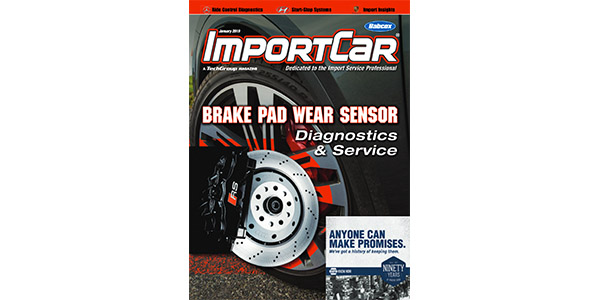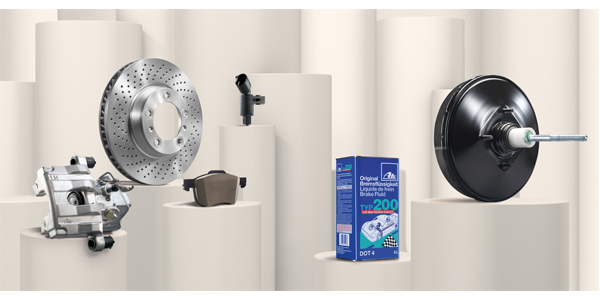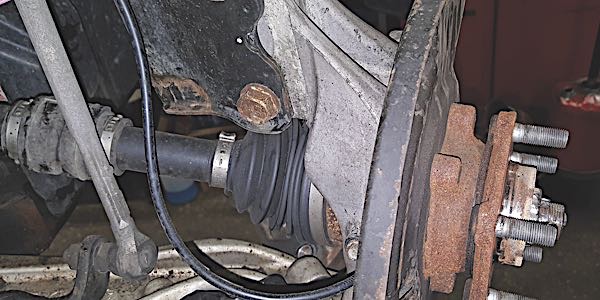Tech Tip: Diagnosing a Worn Wheel Hub Bearing
Signs of a worn wheel hub bearing vary in severity. Some may be difficult to detect, leading to damage before corrective action can be taken. The time frame in which damage occurs is linked to driving conditions and/or the mechanical practices that were followed at installation. Noise is a classic sign of a bad wheel bearing or wheel hub bearing.
Steering Position Sensors: Keeping on Track
The steering position sensor’s basic function is to monitor the driver’s steering inputs. This includes the angle of the steering wheel and/or the rate at which the driver is turning the wheel. The information may be used to vary hydraulic pressure in a variable-assist power steering system, or by a stability control system to improve
A Brief History of the Steering Wheel & Power Steering
It’s 1956 and the 20-inch-diameter steering wheel on a Chevrolet Bel Air or Ford Fairlane provided the leverage to steer the wheels. But, it was especially difficult to turn the steering wheel when the vehicle was stopped. Turning the wheel required a certain amount of upper body strength that was given by God to truck
Tech Tip: Symptoms of a Worn Wheel Hub Bearing
Signs of a worn wheel hub bearing vary in severity. Some may be difficult to detect, leading to damage before corrective action can be taken. The time frame in which damage occurs is linked to driving conditions and/or the mechanical practices that were followed at installation.
Making Sense out of Sensors
Sure, you may be familiar with some basic sensor operation. But as an automotive technician, you may not really understand all of the ins and outs of many common sensors. Do you really understand how they work, how the PCM views them and the possible scan tool and DVOM results when things go wrong? If
Check Out The January Issue Of ImportCar Magazine
A digital version of the January issue of ImportCar is available on-line. Access the easy-to-view digital version that features articles on Modern Engine Diagnostics, Audi Brake Pad Wear Sensors, Mercedes-Benz ML Series Problems and Cures, ADAS Alignment Procedures, Hyundai Idle Stop and Go, Active Wheel Speed Sensor Logic, a host of import tech tips, and more!

Nissan And Infiniti ABS Service: Good Working Order Of The Basic Brake System Eases Diagnostics
On early models, wheel speed sensors send an AC voltage signal to the ABS control module. On later models, active wheel speed sensors change the voltage signal produced by the ABS control module. Active wheel speed sensors are more accurate and work at lower speeds. This is why they are found on most Nissan/Infiniti models after 2012.

Continental Announces Return And Expansion Of ATE Brake & Hydraulic Parts Program To The North American Market
The ATE brand encompasses brake pads and rotors, boosters, master cylinders, wheel speed sensors, brake wear indicators, calipers, brake fluid, hoses and reservoirs, as well as wheel cylinders.

Diagnosing ABS And Vehicle Stability Control Issues
These driver aids are empowered by control unit monitor inputs from the wheel speed sensors, steering angle sensor and yaw sensor. Using these inputs, the control unit makes decisions and sends output commands to the ABS modulator and throttle body to help the car follow the course that is expected by the driver.

Indirect Tire Pressure Monitoring Systems Making A Comeback On Some Imports
Indirect Tire Pressure Monitoring Systems (TPMS) are the systems that do not have air pressure sensors inside the tires. Rather, they detect a low tire by comparing relative wheel speeds via the Anti-lock Brake System (ABS) wheel speed sensors. New systems are taking advantage of better wheel speed sensors and modules to make indirect systems work. Indirect TPMS began making a comeback in 2011 on all Audi models. The highly popular Honda Accord switched to indirect TPMS for the 2013 model year.
